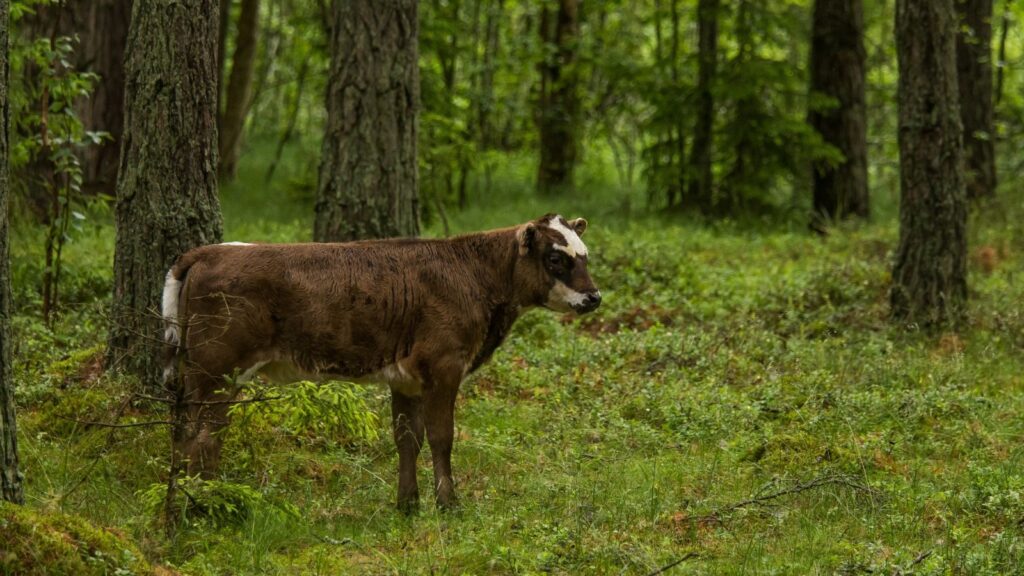CSRD, CSDDD, TNFD, ESG, BNG, the regulatory abbreviations continue to emerge in the world of sustainable food production and land management. Another addition to this list is EUDR, which was brought to life in 2023 and has recently begun to take shape having a greater impact on some agricultural and land enterprises than others. This new regulation represents an effort to combat global deforestation and promote sustainable supply chains.
EUDR and its Impact on Beef Production
The implications for the beef industry are significant, both within and outside the EU. Beef production is a key driver of deforestation in some regions globally. The EUDR aims to minimise the EU’s contribution to global deforestation. By regulating commodities linked to deforestation, such as beef, soy, palm oil, coffee, cocoa etc. For this article, I will focus on the beef industry. Under this regulation, companies importing beef products into the EU must ensure they are “deforestation-free.” This means they were not produced on land deforested after December 31, 2020.
Key Challenges for the Beef Industry
This regulation has posed several challenges for beef producers, processors, retailers and the industry as a whole. Three key challenges include compliance / reporting, monitoring technology availability and economic and market impacts.
Traceability and Technology Requirements
A technological challenge the beef industry faces as a result of EUDR, is the need for robust traceability systems across supply chains. Producers and exporters must prove that their beef has no links to deforestation or illegal land use. This requirement will contribute to increased demand for digital tools such as satellite monitoring, and geospatial mapping to verify the origin of beef products. Farmers must demonstrate that the beef they produce is not linked to deforestation or forest degradation. Specifically, the land used for grazing cattle must not have been deforested after December 31, 2020. Providing historical land use and cover data for grazing areas is driving demand for tools like satellite imagery or geospatial data to verify land use compliance. This will further drive the concept of full circle farm to fork documentation providing detailed records linking beef to specific farms or regions. Data from national databases including animal movements and identification will also be required in order to track cattle throughout their lifecycle.
Compliance with Environmental, Labor and Human Rights Laws
In addition to deforestation criteria, the EUDR requires adherence to local environmental, labor, and human rights laws. Farmers will have to ensure grazing practices do not violate environmental protections. Due diligence in relation to reporting will require that farmers or entities exporting / trading beef must provide supply chain declarations that verify that their products meet EUDR requirements, including risk assessments identifying and mitigating any deforestation risks in their supply chain. Third party verification will also be vital for beef producers with certification bodies or schemes validating sustainable on-farm practices, enhancing credibility for EU markets.
Economic and Market Impacts
By meeting these requirements, stakeholders across the beef industry can ensure continued access to EU markets while contributing to global sustainability goals.
An economic challenge could be that the regulation imposes additional costs on producers and exporters, particularly small-scale farmers who may lack the resources to invest in traceability systems. For larger producers, the need to adapt to stringent EU requirements may increase operational costs, which could ultimately affect pricing and competitiveness. Another economic impact will include the potential redirection of beef trade flows. Producers unable to meet EU standards might focus on markets with less stringent regulations, potentially increasing deforestation pressure elsewhere. Conversely, compliant suppliers stand to benefit from greater access to the lucrative EU market. Another challenge for countries with high deforestation rates, such as the Mercosur bloc, face significant hurdles in meeting the EUDR’s criteria. Beef exports from these regions risk rejection by the EU market if compliance cannot be demonstrated. This creates a divide between producers with sustainable practices and those reliant on deforestation for expansion.
Senus’ Role in Compliance and Innovation
At Senus, we continually strive to provide environmental measurement and reporting technologies. This ensures compliance for our customers across the European agriculture, food, and land use sectors. Our Senus Terrain product enables corporates, processors, and producers to comply with regulations. It uses remote sensing and ground truth verification technologies on their landbank. For more advice and insights on our technologies, feel free to read more at www.senus.com.
The Future of EUDR and Sustainable Beef Production
The EUDR represents a paradigm shift in the global beef industry. It emphasises the need for sustainable production practices and traceable supply chains. While the regulation poses challenges, it also drives innovation and fosters accountability. This is particularly true for producers in high-deforestation regions. As the industry adapts to these new realities, the EUDR could pave the way for a more sustainable and equitable global food system. Innovation and accountability are two pillars of Senus’ purpose. Senus aims to enhance the well-being of land stewards and the environment through technology.



